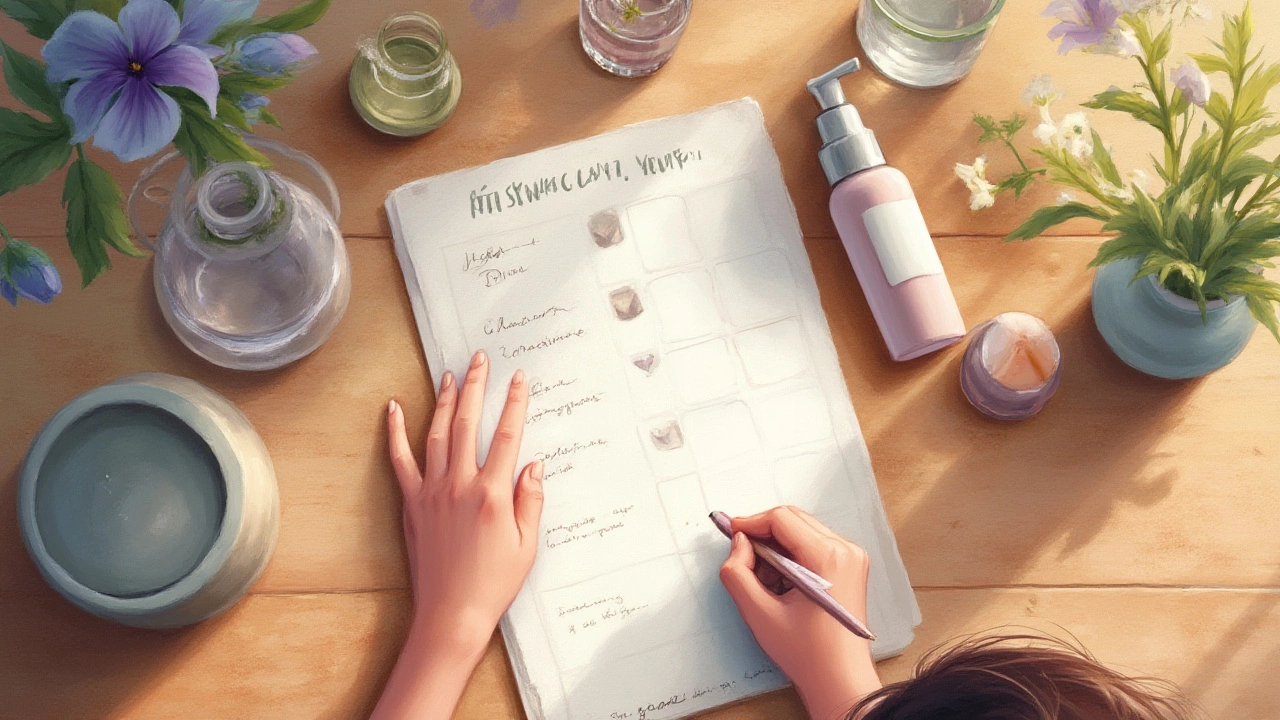
Ever felt totally lost in the endless sea of skincare advice online? One day it’s all about K-beauty’s 10-step routine, then you’re hearing you only need three products, and suddenly your feed is bursting with serums, oils, and acids you’ve never even heard of. The truth is, there’s no one-size-fits-all. But planning a skincare routine is less about snatching up every hot new product than truly understanding what your skin craves. Let’s decode the steps and set up a routine that actually makes sense, fits real life, and gives your skin that “I woke up like this” confidence.
Understanding Your Skin: The Foundation of Every Routine
Before you even think about stocking up on products, take a long, honest look at your actual skin—not what you wish it looked like, or what your favourite beauty influencer swears by. The big secret? Your skin type changes more often than you’d think. Hormones, seasons, stress, and even your morning coffee habit all play a role. In Sydney’s mild-but-humid climate, many people deal with combo skin—dry in some spots, oily in others. But plenty of us go through dehydrated patches during the winter, or get slick T-zones come summer.
Here’s a super straightforward tip: Wash your face gently, wait about an hour, then see how your skin feels. If it’s tight or flaky, you’re dry. If you’re shiny in just your T-zone, welcome to combination club. Oily everywhere? That’s self-explanatory. Getting breakouts and redness? Might be sensitive or acne-prone. Skin not fussed at all? Lucky you, you’re probably normal (for now!).
Once you’ve figured out your skin’s mood, think about your main goals. Are you aiming to clear up spots? Soften fine lines? Keep oil under control? Less is always more at first. You can level up as you learn what actually makes your skin happy—don’t throw everything on at once. And always, always patch test first. Even the most gentle product can set off havoc if it doesn’t agree with you.
Curious about how long it really takes to know if something works? On average, it’s around 4 to 6 weeks—that’s a full skin cycle. So patience pays off. Chopping and changing every few nights is the fastest way to confuse your skin. Pick a lane and stick with it (your results will thank you).
| Skin Type | Common Signs | Usual Needs |
|---|---|---|
| Normal | No real issues, balanced, clear | Gentle cleansing, basic hydration |
| Dry | Tightness, flaking, dull tone | Rich hydrators, gentle handling |
| Oily | Shine, larger pores, breakouts | Oil control, non-comedogenic formulas |
| Combination | Oily T-zone, dry elsewhere | Targeted products for different areas |
| Sensitive | Redness, itching, burning | Minimal, fragrance-free, calmers |
You can absolutely switch things up by season. In Sydney, winter winds can call for thicker creams, while summer’s humidity might have you reaching for gel moisturisers or lightweight SPF.

Building Your Skin Care Steps: What Goes Where and Why?
Now that you know what your skin wants, let’s break down the routine into bite-sized steps so it actually makes sense. Here’s the easy-to-remember order: cleanse, treat, hydrate, protect. That’s it. Sure, you can get fancier as you get more confident, but the basics never change.
- Cleanser: Sweep away the day’s dirt, pollution, and sunscreen. If you wear a full face of makeup or waterproof SPF, try double cleansing—oil cleanser first to dissolve stubborn bits, then a gentle foaming or cream cleanser. Ditch anything that makes your skin feel squeaky—too harsh is a no-go.
- Toner (optional): If you like, swipe on a toner with hydrating or soothing benefits. Forget old-school astringents. Modern toners can calm redness or re-balance your pH.
- Treatment: This covers everything from vitamin C serums (for glow and dark spots) to niacinamide (balances oil and calms redness) and retinoids (targets fine lines and texture). Layer the thinnest to thickest. Only introduce one new treatment at a time so you don’t overwhelm your skin.
- Moisturiser: Even oily skin needs this step. This locks in hydration and supports your barrier. Creams suit dry skin, while gels are great for oilier types.
- Sunscreen: Every single day, rain or shine, even if you’re inside and it’s cloudy. UV definitely gets through windows, and even in Sydney’s cooler months, exposure adds up. Dermatologists point out that daily SPF 30 or higher can cut your risk of skin cancer by about 50%. Not bad for one small step.
Nights are a bit more relaxed. You can skip the sunscreen, but this is a great time for richer moisturisers and active treatments (just not everything at once).
If you love a simple self-care ritual, try adding a weekly clay mask for oily skin, or a hydrating sheet mask for thirsty faces. Just don’t feel pressured—you don’t have to do everything to see results. The secret sauce? Actually sticking to it. Your skincare routine should feel like a treat, not a punishment.
Mix and match as you go, but avoid clashing active ingredients (for example, don’t layer retinol and vitamin C if you’re just starting out). And never forget: the most expensive serum in the world won’t help if you skip SPF.
One common mistake? Jumping on every new ingredient trend. It’s way smarter to master the basics. Surveys in Australia found that people happiest with their skin are usually those with the most basic, consistent routine—just three or four steps, every morning and night.

Troubleshooting, Tweaking, and Keeping Up Consistency
Maybe you’ve mapped out your routine, lined up your bottles (yes, we all love a neatly organized shelf), but you’re stuck in the ‘start and stumble’ zone. You forget steps, get lazy some nights, or start mixing in too many new products and get new issues cropping up. Sound familiar? That’s normal—and totally fixable.
First, remember skin thrives on routine, but real life isn’t perfect. Missed a night? No panic. Just don’t use that as an excuse to quit. Keep your products visible—put your cleanser and SPF near your toothbrush to remind yourself. mini routines work too. If your night’s chaotic, a splash of micellar water and moisturizer is better than nothing.
If you get breakouts or irritation after adding something new, pause and go back to basics for a week or two. Sometimes it’s a purge (especially if it’s a retinoid or acid), sometimes it’s just your skin saying nope. To reduce risk, do a patch test—dab new product behind your ear or on your inner arm for a few nights. If you’re fine, try it every second night before going daily.
If your skincare is getting pricey, remember that effectiveness isn’t price-based. Plenty of budget brands in Australian pharmacies pack the same punch as luxury lines—it’s the ingredients and how you use them, not the branding.
Don’t forget lifestyle outside of your bottles: your skin loves healthy habits. Stress, lack of sleep, sugar, and not drinking enough water truly show up on your face. A quick walk, a big glass of water, or eight hours of decent rest make more difference than any ‘miracle’ serum. And if you’re bored, swap out a mask or add a gentle scrub once a week for a skin refresh.
A stat that blew my mind: up to 80% of visible aging is due to sun exposure, not genetics. The daily skincare routine you stick to, especially sunscreen, is the number one anti-aging strategy you’ve got. No cream or injectable can replace that.
So why does it matter to plan your steps, not just wing it each day? Consistency lets you actually track what works, what doesn’t, and gives your skin time to adjust. If your skin suddenly starts freaking out, it’s much easier to pinpoint the problem if you aren’t switching up your routine every week.
Your best routine will grow and change with you, from high school spots and mid-20s glow ups, to tackling fine lines and morning ‘puffiness’. It doesn’t have to be overwhelming, expensive, or Insta-perfect—just something you enjoy doing most days. That’s real skincare planning in action.
 Hair Care
Hair Care